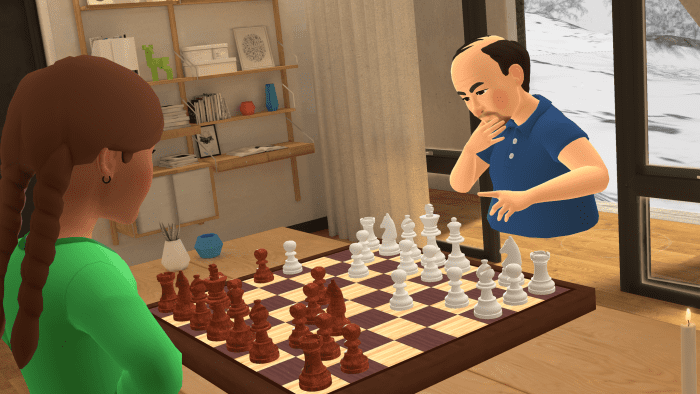Carl Hortsmann found a way to take his 87-year-old father scuba diving on the Great Barrier Reef, skiing for the first time, and taking him to visit his old neighborhood in Union, NJ, where he grew up – all with the help of virtual reality.
As part of an early phase of a clinical trial with the University of California, Santa Barbara, the Hortsmann family enjoyed a new way to connect with Hortsmann elder Ted, who lives in a residence- service in Massachusetts.
“It was an awesome experience. My dad was really blown away,” said 61-year-old Carl Hortsmann. “He keeps referring to it and wanting to talk about it and do it again.”
“I was so absorbed in the activity that I didn’t even think of the helmet. I’m going to buy my own set for my family to travel, they can take me with them,” said Ted Hortsmann. “I got so much pleasure out of it.”
The first phase of the clinical trial revealed notable emotional benefits for seniors. Users experienced decreased negative emotions and feelings of isolation, increased positive emotions and engagement with family members, and improved overall quality of life. Family members reported similar mental health benefits as well as a significant decrease in caregiver guilt after using the virtual reality platform with loved ones.
Virtual reality products were boosted by the COVID-19 pandemic when people wanted to be remote but still had social connections, said Anshel Sag, principal analyst at Moor Insights & Strategy.
A second phase of the study is currently underway with funding from the National Institute on Aging (NIA), a division of the National Institutes of Health (NIH).
Even beyond the pandemic, there is a demand for older people to connect with family and friends through technology, Sag said.
“There is an ever-growing market for older people wanting to communicate with their family, especially as traveling becomes increasingly difficult as one gets older. The market size is growing as baby boomers retire and age,” Sag said.
Read: Want to age in place? You may have a robot keeping you company.
Moving into a seniors’ residence can cause feelings of depression in seniors, with 40% of seniors’ residence residents experiencing depression or isolation during their stay. Research has shown that social isolation is as detrimental to health as smoking 15 cigarettes a day.
“Social isolation is still high, even in senior communities,” said Rendever CEO and co-founder Kyle Rand. “People live side by side but do not form a community. A large demographic also wants to age in place. There’s a big risk or a trap of social isolation in there.
The technology, called Alcove, is a consumer VR product available to families at home through their own VR headsets. Consumers can download Alcove for free. Rendever Inc., a Somerville, Mass.-based company, this month acquired Alcove from co-development partner AARP.
By integrating Alcove in-house, Rendever said it wants to expand the reach of the product to create a better aging experience for seniors around the world, regardless of where they live.

Courtesy of Rendever Inc.
While Rendever has traditionally focused on seniors living in senior living communities, palliative care organizations and patients in hospitals, the acquisition of Alcove will accelerate Rendever’s mission to forge virtual communities and expand the use of technology.
With this acquisition, Rendever better supports the aging population by bringing shared experiences to millions of seniors at home, as well as their families and caregivers.
“With Alcove, anyone can enjoy the Rendever experience from the comfort of their home, downloaded anytime through the Quest store. Creating Alcove with AARP has allowed us to bring more joy to the people of the world, and we are excited to pursue this mission even more concretely,” said Rand.
Rand said Alcove has been used by 500 communities of seniors, considering 1.5 million experiences for a total of six years.
It’s hard to predict the potential size of the market, but Sag said he sees it growing to soon be in the hundreds of millions of dollars “as the size of the elderly population grows, as does the availability of headsets.” VR”.
“Something to consider is that as people get older their eyesight tends to decline and they don’t need headsets or hi-res experiences and are more than happy and amazed at what’s available today. today,” Sag said.
Read: What robots will mean for your retirement
“The next phase of growth is an opportunity to draw the line between senior living and aging in place,” Rand said. “Virtual reality is a key tool to challenge these physical barriers and form community. It is a tool that helps build a community. When you think about the aging process, there is no one-size-fits-all solution. It’s a tool in the toolbox.
